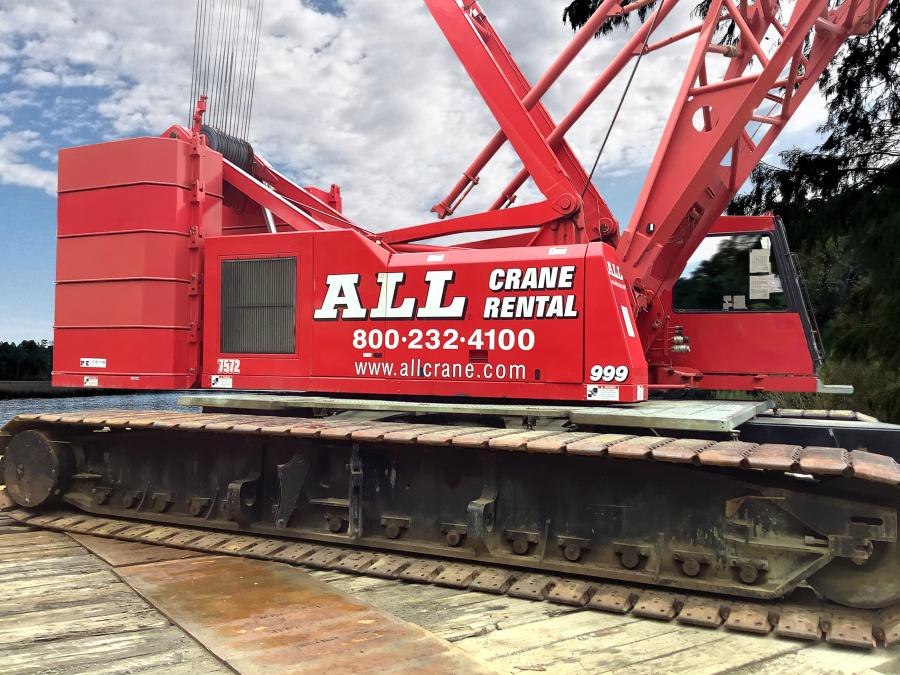
Wed October 18, 2023
ALL Crane
In the world of heavy-lift equipment, capacities have grown exponentially over the past decade. With some lattice boom crawler cranes handling well over 1,000 tons, one that tops out at 275 tons might seem almost quaint. But it's a crawler weight class that's been the contractor's choice, finding homes in infrastructure, refinery and plant work, and commercial construction markets.
ALL Crane Rental of Alabama, a member of the ALL Family of Companies, is keeping two such cranes busy with long-term railroad bridge renovation jobs. In both cases, a Manitowoc 999 was specified to perform heavy lifting for a ground-up renovation of bridges over rural rivers, one in Alabama, the other in Georgia.
Scott Swearengin, sales representative of ALL Crane Rental of Alabama, said it's uncanny how alike both projects are, from topography to remoteness of location to bridge type. ALL's customer for both jobs is Hall Contracting of Louisville, Ky.
The bridge location in Theodore, Ala., is so remote and so heavily wooded that Hall had to build a temporary road so trucks could access it.
"We specified the Manitowoc 999 because it gave us the appropriate lift capacity and had the reach we needed," said Swearengin. "We set up the crane in the middle of the Fowl River below the bridge, and with 210 feet of main boom, the Triple 9 is able to reach both ends of the bridge, left and right, from that position."
The crane was at the site for a total of six months, first doing foundation work, then replacing beams and railroad trusses. Weights to be lifted range from tub girders at 40,000 lbs. all the way up to bridge spans topping out at 122,000 lbs. The Triple 9 handled these and everything in between.
Setting up a crawler in an active river required three layers of matting to keep the tracks above water level. The crane also had to make frequent crawls to the riverbank when rain threatened to raise the water level. Due to railroad schedules, work was off-and-on, typically consisting of several days on followed by several days off.
Work in Alabama was completed mid-September with the mirror-image job in Georgia wrapping up soon.
 Cranes Equipment
Cranes Equipment Articles
Articles Sign up for Updates
Sign up for Updates Sell Your Machines
Sell Your Machines

 Cranes Equipment
Cranes Equipment Cranes Dealers
Cranes Dealers Cranes Articles
Cranes Articles Sign up for Updates
Sign up for Updates Sell Your Machines
Sell Your Machines